Not too long ago I was “listening in” you might say, on a Facebook conversation with some fellow illustrators talking about how artistic careers can evolve and change over time. In the comments someone mentioned that this topic would make for a great Muddy Colors article and I agreed!
I invited Eric Wilkerson over to talk through some of these thoughts and to share his insights about the importance diversifying your portfolio as well as cultivating multiple means to support yourself. Enjoy!
This is dedicated to all the art school students out there. Whether you’re learning online or at a brick and mortar college. A career as an Illustrator is not an easy path, no matter what industry you work in. A career in the arts can have successes or pitfalls based on a variety of factors. Sometimes your career will flow and other times it will ebb. Being able to adapt to these potential fluctuations can mean the difference between a stable career or eventually moving away from the arts as a main source of income all together.
When many Illustrators leave school they have a very specific goal in mind. They want to do a variety of different things. From cover art to visual development for animation and everything in between. Personally, I bore easily and knew early in life that I didn’t want to focus exclusively on one type of art or art style for my entire life.
STARTING OUT AND FINDING YOUR PATH
Some of you may be rockstars from the second you leave school. You know exactly what you want to do, who you want to work for and doors will naturally open as you get your art out there. For the rest of you it may take a bit of time to focus, find your path and develop a portfolio strong enough to get work.
For those of you trying to find your voice or specific style, you must remember that life is short and art is long. This means that even when you think you’ve mastered something artistic, there will always be more to learn. A new app, a new medium or something not yet invented that you will absolutely need to know for your livelihood.
All that said, I can’t stress enough how important it is to aim for the thing you are MOST passionate about. Various types of illustration pay wildly different rates depending on the industry and project you work on. If you don’t enjoy what you’re doing and are only chasing the money that is a sure path to career burnout.
CHANGE IS THE ONLY CONSTANT IN THE UNIVERSE
After you’ve spent a period of trying super hard to establish a career in the arts, things are finally going smoothly but what do you do if work slows down to a trickle? Change is the only constant as an illustrator. We need to adapt to a variety of things in order to keep working consistently.
- What if art directors you worked with leave and are replaced with people that have their own favorite roster of artists to choose from.
- Or you aren’t physically able to work within your career path due to family or medical reasons.
- Perhaps you say or do something so bad that your clients no longer want you associated with their brand.
- Or through no fault of your own a steady client just stops calling, lays off half the studio art department, etc.
What do you do then? Your bills still need to be paid. Your family still needs to be supported.
DIVERSIFY YOUR PORTFOLIO
When I was attending School of Visual Arts I discovered the work of Dean Cornwell. I read in one of his art books that he was adept in multiple styles of art which allowed him to jump from editorial illustrations to caricature art to portraiture to murals. Cornwell also served as President of the Society of Illustrators and taught at the Art Students League in New York City. He was seemingly all over the place and I didn’t understand why. Why not be like Rockwell and do the same thing for the same client every year for decades? Some people don’t want to do that. Some people can’t. Some simply need variety but most importantly being able to juggle more than one art style across multiple industries guaranteed that if one path slowed down for Cornwell he could always adapt and move on to something else in order to maintain a steady career.
A few of my college mentors juggled editorial illustrations, romance covers, middle grade covers, advertising illustrations, fine art portraiture, public art murals, original art sales and teaching. When one type of work slowed down they were able to pivot to something else. This inspired me to take classes geared toward my interests. I took classes in storyboarding for film/animation, digital painting, 3D modeling, Children’s book illustration, scifi illustration, concept art and fine art portraiture. My hope was that by learning all of this I would be able to pivot like some of my SVA instructors just in case one type of work ever slowed down. Future proofing my career has led to opportunities I never would’ve imagined and I honestly don’t know where I’d be if I just chased after one company or type of work only to get rejected again and again.
While I worked on portfolio samples to prove that I could do the thing I was most passionate about I switched gears to work in advertising, concept art, digital matte painting and UI design until some creative director was willing to give me a chance to do what I loved most. This approach kept me from having to work mind numbing retail jobs or completely abandon the arts for some other career path in order to maintain a standard of living.
I know there are articles saying an illustrator should have one focused portfolio aimed at a specific goal but having an all eggs in one basket approach doesn’t always work. Especially not today considering the rates for commercial illustration haven’t really adjusted for inflation and cost of living.
MULTIPLE SOURCES OF INCOME
In addition to being able to juggle more than one type of illustration work it can also be extremely beneficial to have other streams of income.
You don’t have to work full time as a freelance artist to be considered a professional. Many professional Illustrators and concept artists have multiple sources of income.
Some visual development artists working at your favorite animation studios moonlight as children’s book Illustrators or spend time promoting their own intellectual property at conventions.
Many professional artists also teach K-12, online or at the college level for a stable source of consistent income.
Conventions can be a great place to earn additional income selling your art on a variety of products to potentially thousands of people. These venues also allow you to establish your brand and meet art collectors. However due to the pandemic shutting down conventions for almost 2 years, artists who earn the majority of their annual income through convention sales learned firsthand how important it is to have multiple streams of income.
Online sales – Having a patreon account or selling through your website store can be a slow build up to a consistent stream. This will depend on your available time and how well you market yourself online.
Original art sales – There are increasingly few illustrators working across genres today that care to work traditionally or even know how. The demands of the industry and rapid deadlines we work under make it more efficient to create our work digitally.
However this increase in digital illustrators has also increased the demand by art collectors for original works of art. With a smaller number of artists capable of creating original paintings of comic book characters and other fantasy based imagery, the artists that can create this art can command higher fees.
Ultimately you should strive to do what makes you happy but nobody should be well into a career doing one thing to earn a living only to have it suddenly end with no backup plan. If this is you then it’s never too late to broaden your horizons.
I hope this helps someone out there better prepare themselves to navigate the challenges of a professional art career.
Eric Wilkerson is a Chesley Award winning and New York Times Best Selling illustrator whose client list includes Wizards of the Coast, Weta Workshop, Marvel, Dark Horse Comics, Scholastic and Disney Publishing, to name a few. He has created art for film, TV, advertising, publishing, comics and video games. A graduate of The School of Visual Arts, he teaches illustration while also focusing on painting people of color having out of this world adventures.
You can see more of his work online at ericwilkersonart.com and @ericwilkersonart and as a co-host of the Painted In Color Podcast. Painted in Color is a Podcast dedicated to fostering a community for and amplifying the voices of underrepresented artists. Hosted by Lauren Brown, Esther Wu, Mia Araujo, and Eric Wilkerson.


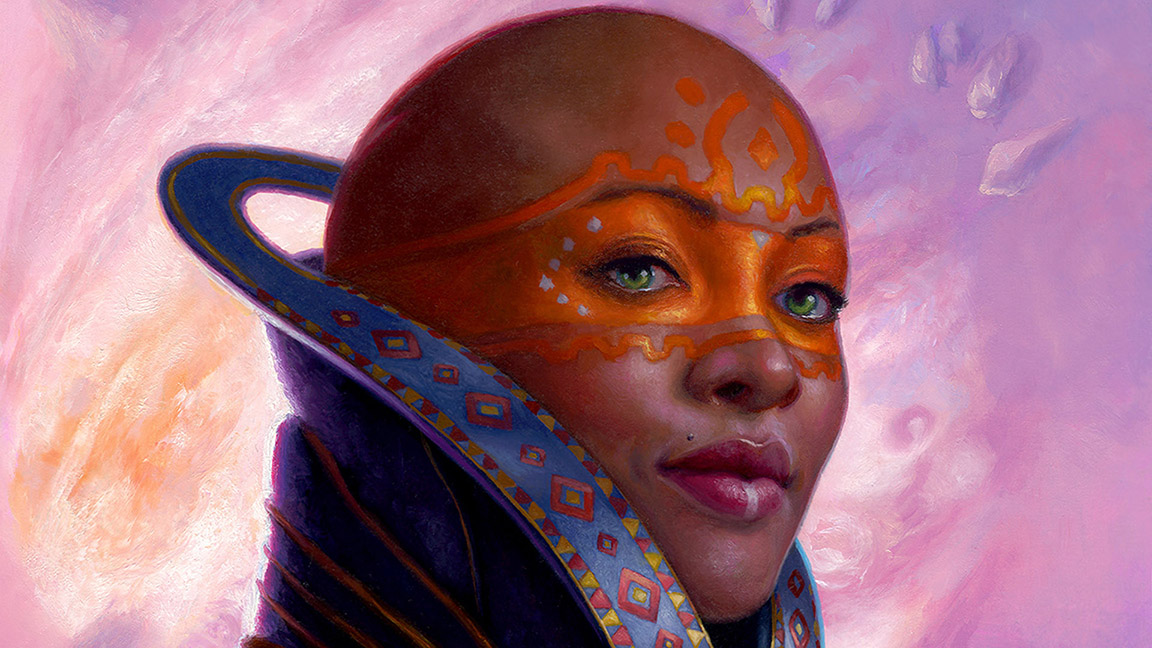
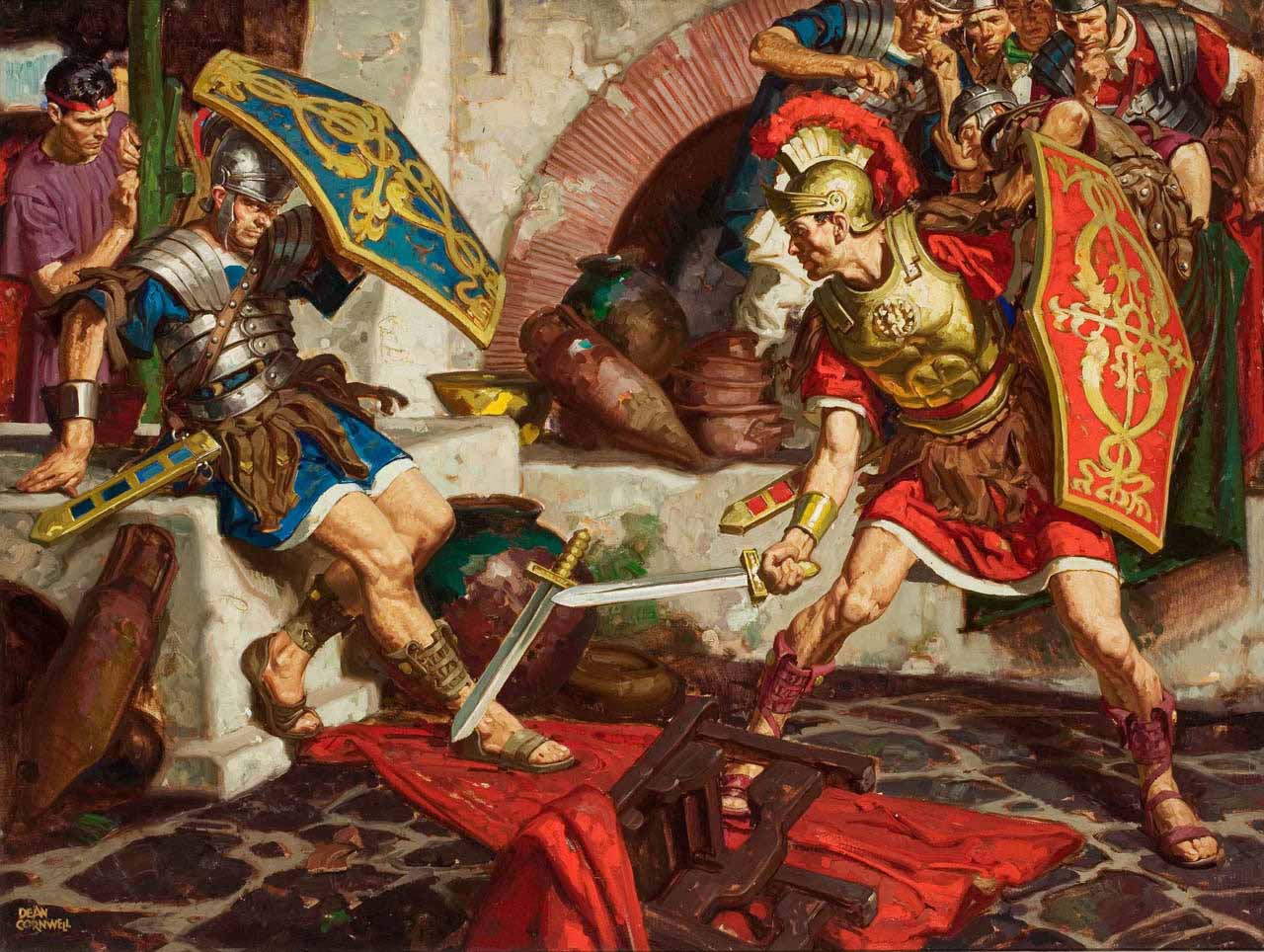
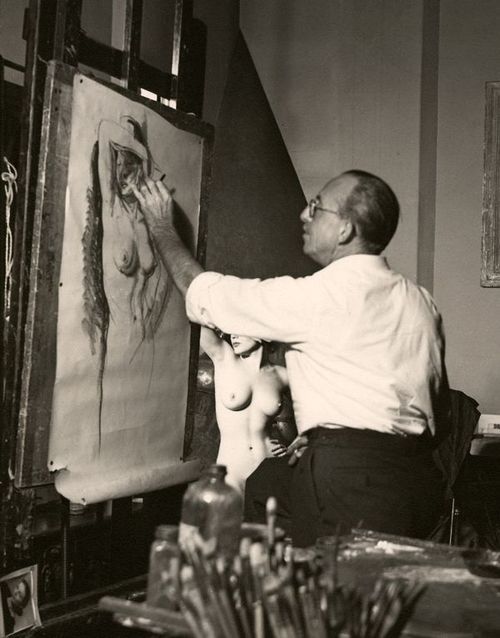
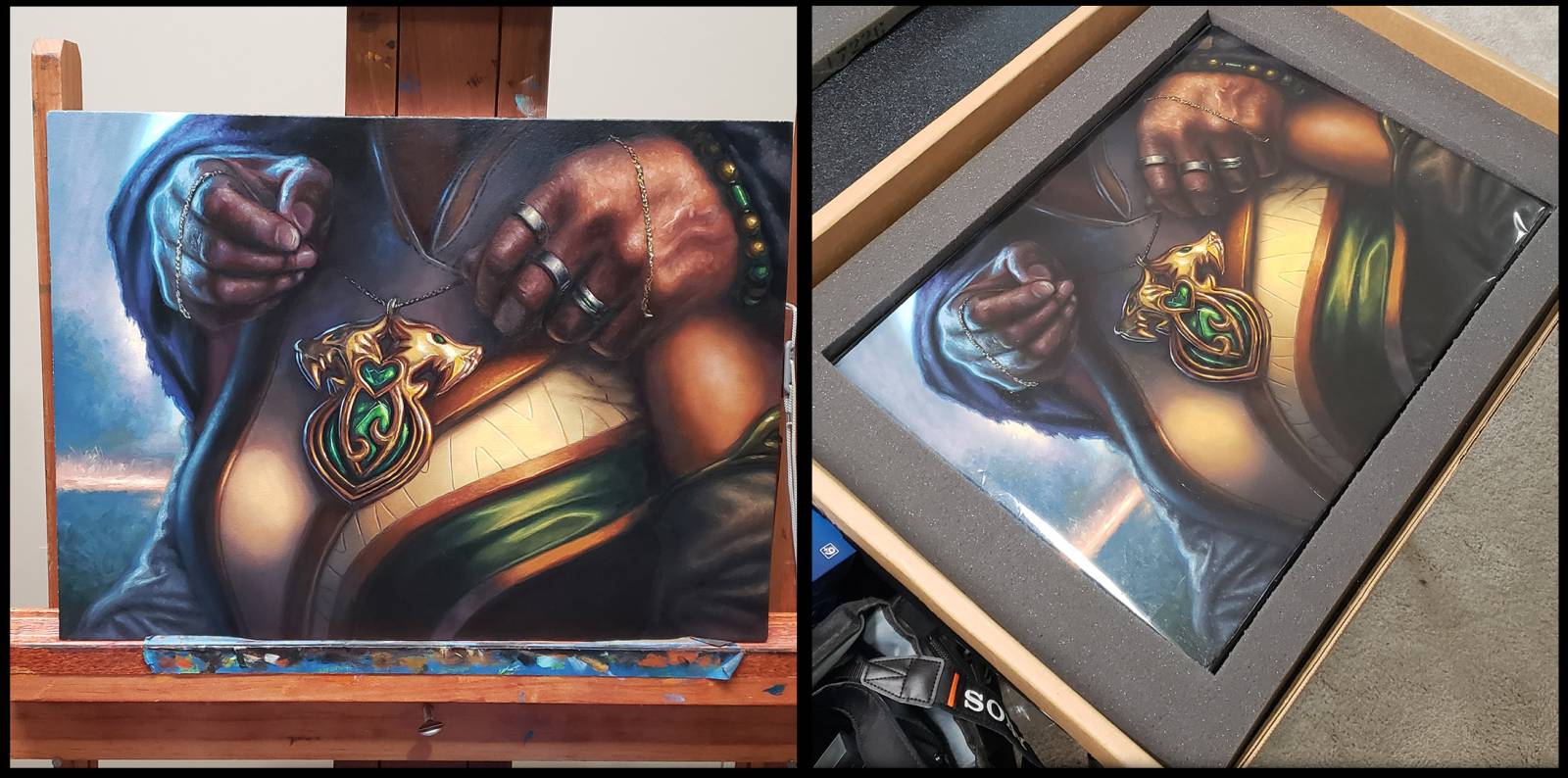


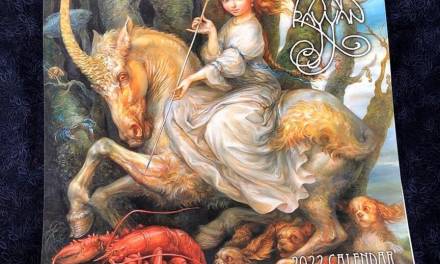
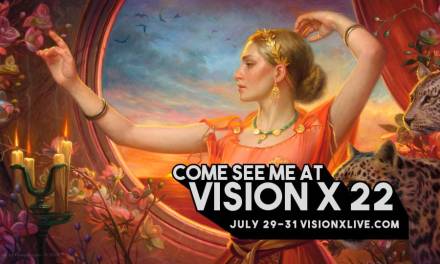

What a fantastic post – thank you so much! My personal experience agrees with your statement that “having an all eggs in one basket approach doesn’t always work.” At one time I was a graphic designer with a very distinct specialization – one that, it turned out, didn’t translate at all to other design jobs when that one ended. So I shifted over to illustration, and ended up doing a very specific kind of oil painting in a small niche. This had some success but it reached a plateau – I was never able to top roughly $10,000 a year doing that, and so I’ve been stuck in a holding pattern of working a mind numbing retail job or some equivalent thereof, while barely floating at that freelance income mark.
The thing is, after some soul-searching, I realized that I was trying to focus on one niche, one specialization, *because* so much advice out there suggests that we need to focus and specialize in order to stand out. It’s not because my passion is so singular. I’m rather more like yourself, I think – I bore easily and if anything, my passion is variety, it is to stretch my creativity in different ways, working in multiple ways and multiple genres.
So over the past couple of years I’ve been working on shifting my approach – giving up on specialization and just following my creative interests where they take me. I’m still learning, but hoping that this new approach will diversify my career and income enough that I can do creative work *all the time* without having to resort to mind numbing day jobs. So I’m working on not only improving my oil painting, but also learning digital painting, broadening my design skills, 3D, and UI design. And I’m also working on composition skills so that I’m better equipped to compose a painting for a broader variety of scenarios (e.g. book covers versus editorial). This is all still an experiment that I hope bears fruit – but in the meantime I love everything I’m learning!
So I just wanted to thank you for validating this approach – I’ve been worried that I’m spreading myself too thin and will be unable to produce a focused enough portfolio for any industry in particular. But I can see from what you’ve written that surely it should be possible for me to produce multiple appropriate portfolios in the process. Thank you again to Eric for your thoughts and experience and to Cory for hosting this discussion!
Thanks very much, Kat!
Kat you are most welcome. Spreading ourselves too thin is almost the definition of an illustrator. You have to wear so many hats these days just to scream loud enough to be noticed. All while constantly doing what you can in increase your technical skills. Good luck!
I feel my biggest career problem is mediocrity. I’m good enough to be seen as not be a beginner, but not great enough to be employable. All the avenues I want to work in have artists I could never be equals to. I’ve tried zeroing in on a single thing I’m passionate about but can’t match the quality thats demanded. I’ve tried branching out and I did get some clients but the work quickly fizzled out and I was left with a portfolio I wasn’t interested in and the pay only covered the cost of materials.The artists who do the work I want I can’t contact or don’t have the time, don’t teach or are too advanced to explain what their doing. (Often they’re self taught and can’t explain it themselves.) Courses I’ve taken left me clueless on how to do the art I wanted or require skills they don’t tell how to find. I have personal projects but they are always in the backburner because of my lack of skills. It’s great to see all the ways to make money but frustrating on my end to hit a glass ceiling to not make any of them a reality yet. My biggest worry is that the art I want to do will become a trend and die long before I get the skills to do them. I agree with all the points though! I’m glad having multiple interests can be a good thing too.
Zach I completely understand where you are and how frustrating it can be to feel like you’re so close but not quite good enough in the eyes of various gatekeepers. It sounds like you may need someone who not only knows what they’re talking about but can articulate it in a way that is beneficial for you.
Putting off personal work is not going to lead to any kind of improvement. Perhaps you should try doing more simple studies rather than whatever is so complex that it stays on the backburner.
I think you might also be putting too much stress on yourself to be as good as the artists you admire as quickly as you can. Becoming good at painting, composition, concept design, etc is like weightlifting. You’re not gonna get swole after going to the gym a couple of times. It takes years of consistent effort.
Don’t worry about trends. Do the thing you love. Period. There’s an artist I admire that does alright painting nothing but robots and donuts. ROBOTS AND DONUTS. His work is in the private collection of movie director JJ Abrams and countless others. If you do what you love maybe you’ll start a trend and become in demand. You’ll never know if you stay stuck in a moment.
There is no tomorrow. Don’t continue being frustrated. Practice now.
Good luck.
Thank you so much for your generous reply, its made me feel more at ease.
I’ve been at this for a while and I do my best to say proactive. I’d love to progress on my project (a graphic novel about dragons I’ve chipped at for 14 years now.) but I keep hitting problems that halt or regress all movement forward. Its death by 100 cuts with things like writing and material problems, how to publish it, dragon anatomy, inconsistent style and quality, bad backgrounds, boring design, etc. The most frustrating is the biggest problems I can’t find help online that give actionable advice and I can’t figure out myself.
My studies and personal work feel like 2 islands that never connect. I’ve done thousands of them each but at best I learned only through osmosis and superficially. I understand it takes time but the time I’ve spent feels all in the wrong direction. I’d love to progress I just don’t know how. I’d love to choose small things but even those feel too hard, ambiguous or unrelated. I feel like I’m at a gym regularly, I just don’t have a routine or coach to help me along with. It feels like all I can do is hope one day things click for me and I can finally finish it.